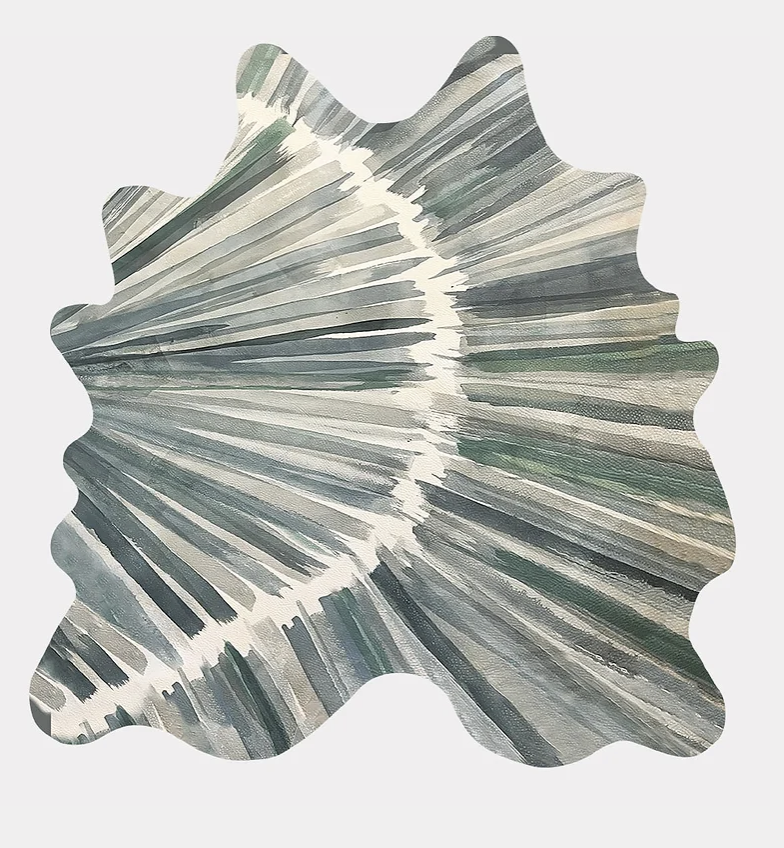Rug Guide: Essential Tips for Each Room
Rugs possess an undeniable charm. They elevate a room's ambiance, infuse warmth, and act as the canvas upon which our furniture comes to life. Yet, the art of rug placement can sometimes feel like a jigsaw puzzle. How big? How small? Under the furniture or just in front? With years of hands-on experience with rugs in various room types, we're excited to share our insights.
Living Room
Always ensure the front legs of sofas and chairs are on the rug.
Leave about 6” of rug on each side beyond the furniture for the best visual appeal.
Common sizes here include 8×10, 9×12, or 10×14. Depending on the size of your room.
Tip: Never let the rug float! If it's too small, it can disrupt the room's harmony and make the room feel smaller.
A general rule we swear by is ensuring the front legs of main furniture sit on the rug.
Image Source: Potter & Wilson
Dining Room
Dining chairs should completely fit on the rug, even when pulled out.
The rug should extend at least 8” beyond the table's dimensions.
Aim to keep 12-18 inches of bare floor visible around the room's edges.
Typically, sizes like 6×9, 8×10, or 9×12 work well.Tip: Strike a balance between the rug and exposed flooring.
Keeping a consistent border of exposed floor ensures the rug complements rather than overpowers.
Image source: Clare Kennedy
Bedroom
For a King Bed:
Maintain an 8” space between the nightstands and the rug's starting point.
The rug should be about 12” longer than the bed's dimensions on all sides.
9x12 is a frequently chosen size.
For A Queen Bed:
The rug shouldn't extend beyond the nightstands.
Allow an 8” buffer on both sides of the bed.
An 8x10 size is usually ideal.
Tip: A rug pad is invaluable! It prolongs the rug's life, ensures comfort, and keeps the rug in position. If the pad size isn't a perfect fit, trimming it can work wonders.
Image source: Paulina Carcach Studio + FAR + Chango & Co
Hallway
The ideal hallway rug, often referred to as a runner, should leave a few inches of floor space on either side. This border frames the rug and ensures it doesn’t look oversized for the space.
Hallways often face a lot of foot traffic, so consider rugs made of durable materials. Wool and polypropylene are popular choices due to their long-lasting nature.
Tip: Since hallways connect different rooms in the home, choose a rug that complements the color schemes of adjacent rooms. It creates a cohesive look and eases the transition from one space to another. And if your hallway isn't naturally lit, a lighter colored rug can brighten up the space.
Image Source: Templeton Architecture + Paulina Carcach Studio + Clare Kennedy
Kitchen
Kitchen rugs should be functional, easy to clean, and resistant to stains. Flat-weave or low-pile rugs are excellent choices as they don’t trap crumbs and are easy to vacuum or shake out.
Consider placing a rug in front of the sink. Not only does it provide a soft cushion for your feet, but it also protects the floor from water and food spills.
Tip: Don’t shy away from bold patterns or colors! The kitchen is a space where you can have a little fun. A vibrant rug can add a touch of warmth and personality to a room that is often seen as purely functional. But if your kitchen already has a lot going on in terms of design, a neutral rug can bring balance and subtlety.
Image Source: KWD +Paulina Carcach Studio + Chango & Co
xx Paulina
Shop The Look


















